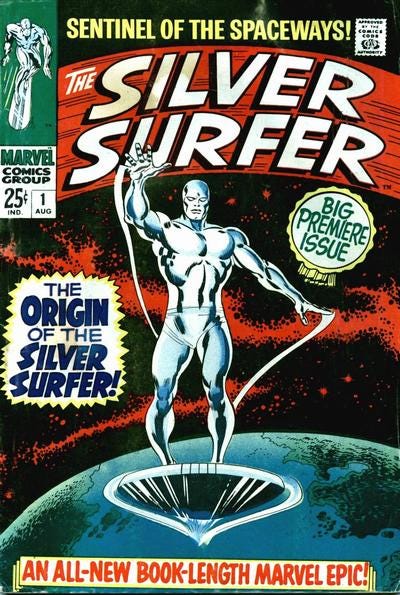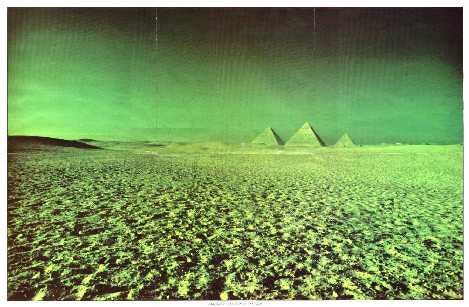The Dark Side of the Moon Album Cover Art Original

"The Dark Side of the Moon": How an Album Cover Became an Icon
Pink Floyd would have been a perfect match for the visually oriented era of Pinterest and Tumblr had the band emerged today.
At the summit of Pink Floyd'south popularity in the 1970s, the Floyd'southward visually absorbing album covers and iconography complemented the artistry of the its music and generated buzz that would make the Word of Mouth Marketing Clan proud. Nowhere is the ability of Pink Floyd's visual appeal more apparent than the cover for the anthology The Nighttime Side of the Moon, released 44 years ago. The Dark Side of the Moon is not merely 1 of the greatest albums ever made, its cover became an visual icon for Pinkish Floyd itself — a tranquillity, mysterious team of four musicians who let their music and visual stories speak for them. For its ability to create mystery and intrigue for iv decades, The Dark Side of the Moon joins my hall of fame of memorable album covers.

The Dark Side of the Moon cover art created intrigue when the album landed in record stores in March 1973. At the time, Pink Floyd was on the cusp of condign a mainstream success with a growing fan base. The cover, depicting white light passing through a prism to form the bright colors of the spectrum confronting a stunning black field, invited listeners to explore the music within — and still does today. The mystery began later you heard the mind-blowing music on the album coupled with bassist Roger Waters's deeply personal lyrics exploring themes of alienation, loss, and materialism.
In context of intense songs similar "Time" and "Us and Them," what did the album cover mean, exactly? The mystery deepened when you studied the affiche and stickers of pyramid shapes found inside the album sleeve.

None of the band members offered an caption, leaving it up to fans to add together their ain meanings, a process that required repeated album listens and discussion with other fans. (In an interview with Ed Lopez-Reyes of Floyd news site Brain Damage, I likened Pinkish Floyd to magicians who don't explain their tricks.) It's no wonder that the anthology turned Pink Floyd into major stars, sold 50 million copies and remained on the Billboard charts 741 weeks.
The Nighttime Side of the Moon design is another product of the fertile artistic team of Aubrey Powell and Storm Thorgerson of Hipgnosis, who are responsible for creating some of rock's about memorable album covers, such as Led Zeppelin'southward Houses of the Holy. As discussed in Marker Blake's Comfortably Numb: The Within Story of Pinkish Floyd, the original pattern emerged from Powell's and Thorgerson'southward practice of conducting brainstorming sessions that stretched from late evening until four:00 a.m. (Hipgnosis had been given minimal creative direction by the band other than a suggestion by keyboardist Richard Wright to "practice something make clean, elegant and graphic.")
Ane night, Thorgerson showed Powell a black-and-white photograph of a prism with a color beam projected through it — an epitome he'd also noticed in a physics textbook. After graphic designer George Hardie provided his expertise, Hipgnosis presented the prism design forth with some others ideas to the band (including a pattern that featured the Marvel Comics hero the Silver Surfer).

The band approved prism concept near immediately. Waters also suggested that the image extend across the gatefold and include on the inside the proffer bleep of a heartbeat (as you would see on a hospital monitor).


There was to be no mention of the band's name or anthology title. Higpnosis countered with some ideas of its ain: the creation of the inserts that record fans institute when the opened the album, including an infrared photo of the pyramids at Giza. Thorgerson then personally undertook the photo shoot of the Giza pyramids sometime after 2:00 a.k. on a clear night with a "fantastic" moon visible.

When the anthology was released, it was an immediate commercial and disquisitional success (fifty-fifty though the band went out of its way not to promote information technology), and a happy marriage of acclaimed music and memorable artwork. The covers made for brilliant images to display in record store windows. The prisms adorning the front and back inspired tape stores to display copies of the albums in various combinations, such as images of repeating prisms interlocking. And before long fans began creating their own visual interpretations:


Because the band members (Waters, Wright, David Gilmour, and Nick Mason) remained reclusive even as the album was turning into a massive best seller, The Dark Side of the Moon cover came to symbolize Pinkish Floyd.
Equally Johnny Morgan and Ben Wardle wrote in The Fine art of the LP, "The anthology was so successful that information technology is this epitome which, for most people, immediately represents Pink Floyd. Even Floyd fans could have walked past Wright or drummer Nick Mason in the street without recognizing them, but show them the prism and they'd say: 'Pinkish Floyd.'"

The album helped turn Pink Floyd into i of the biggest bands in the world, with fiscal wealth, a mainstream following, and wide disquisitional acceptance. However, the trappings of fame created in function by the album's success created enormous tension and alienation that would Waters to write the iconic The Wall in 1979.
The Night Side of the Moon is invariably hailed every bit ane of the greatest and most influential albums always — certainly a defining moment of the progressive rock genre. And the mystery of the cover art remains today. Like all good art, the cover (not to mention the music) remains open up to interpretation — a nighttime, bulletproof symbol of the enduring ability of music.
Follow me on Twitter at davidjdeal .
dabrowskiower1991.blogspot.com
Source: https://davidjdeal.medium.com/pink-floyds-the-dark-side-of-the-moon-how-an-album-cover-became-an-icon-e95bae0bdc32
0 Response to "The Dark Side of the Moon Album Cover Art Original"
Post a Comment